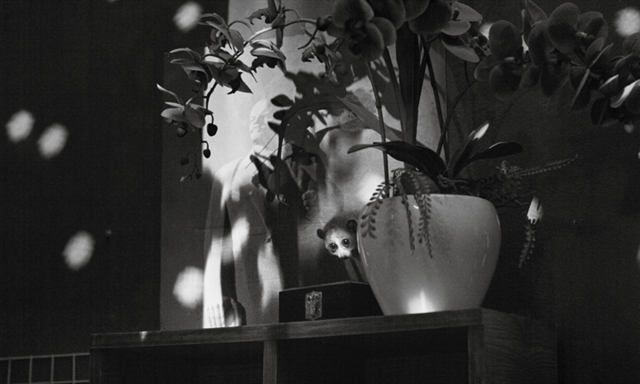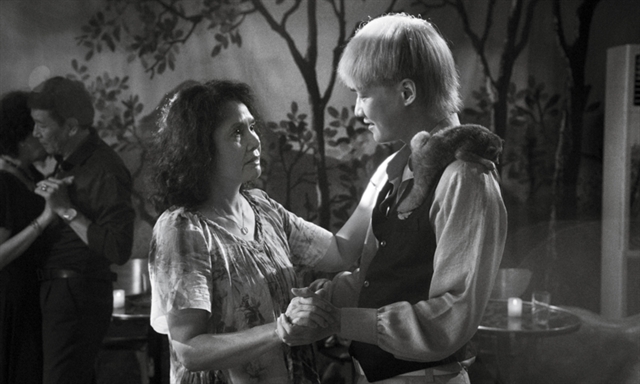 Life & Style
Life & Style

Nghiêm Quỳnh Trang, the co-screenwriter and producer of the Vietnamese film Cu Li Không Bao Giờ Khóc (Cu Li Never Cries) which won the GWFF Best First Feature Award 2024, talks about her cinematic journey and the story behind the film in an exclusive conversation with Việt Nam News reporter Trần Khánh An.
 |
| Nghiêm Quỳnh Trang the film producer, Phạm Ngọc Lân the director with his award trophy, and Nguyễn Thị Minh Châu, the leading actress, at the Berlin International Film Festival (from left to right). Photo courtesy of the Berlin International Film Festival |
Did you expect to win the GWFF Best First Feature Award 2024 when the film was selected for the Berlin International Film Festival?
No. I didn't expect any prize at all. For me, the invitation letter from Berlinale was already an achievement.
As the co-screenwriter of 'Cu Li Never Cries,' could you explain what the title of your film conveys and the symbolic significance of Cu Li (a loris)?
In Vietnamese, the noun Cu Li has three different meanings. First, it is a French loan word coolie, referring to an unskilled native labourer in Asian countries. Cu Li is also a mammal of the order primates, the pigmy slow loris, which is endemic to the Indochinese Peninsula and South China. It is also another name for the Lông Cu Li plant (Golden Chicken Fern - cibotium barometz) in Asian tropical forests which is used in traditional oriental medicine as a cure for back, tendon and bone pain.
In these seemingly irrelevant meanings, there are powerful allusions which trace to the tropical jungle, the influence of ancient Eastern civilisation and the more recent impact of the West on Việt Nam.
For the director Phạm Ngọc Lân, the look of the animal with such big eyes, pure and innocent, yet so sad and wild, is so similar to the look of his muse, People's Actress Minh Châu, as if she has been always searching for something. When Lân first mentioned the animal as a key but silent character, I was already in love with this idea. I used to have a small loris as a gift from my father. However, sadly at that young age — I was eight years old back then and I didn't know how to take care of it, so the loris died. We then used this very story in the film, retold by actress Kiều Trinh.
 |
| The Cu Li (the pigmy slow loris) in the film. Photo courtesy of Cadence Studio and An Nam Productions. |
Cu Li Never Cries's introduction portrays the film as some sort of a journey. What story is conveyed through the journey of the main character Mrs Nguyện, in this film? Is her story similar to yours – a Vietnamese woman living and having a family in Europe?
In the film, Mrs Nguyện somehow travelled back in time, in her memories, to her old days, in search of the happiness she once thought she used to have. In the back story, Mrs Nguyện spent her youth in Germany before going back to her niece in Việt Nam. She didn't mourn her time in Europe, but rather her youth in general.
My case may be a little different. However, what we have in common is that I feel constantly in search of something I will never have, living in both places. I don't know if settlement is what I long for, or the sense of self when I cannot know where I truly belong. Most people living in more than one place would experience the same, I suppose.
The creative team played a crucial role in the film's success, particularly the screenwriter and director Phạm Ngọc Lân. How do you work alongside Lân as co-writer and producer?
We started the script a little before he brought his film Thành Phố Khác (Another City) to Berlinale Shorts 2016. We mostly worked online — we did mind maps and shared ideas. Each of us wrote our parts and then read and commented on the parts of the other. We shared books we read and talked about them. During those years, I also took care of my two kids and Lân made two more short films. I always admire his strong work dedication. We rarely met throughout this scriptwriting time.
During the production time, I was curious about a long feature film set, therefore, I wanted to be there just to observe and learn. Gradually, I became a costume designer, then a production designer, then also a producer, along with the producer Trần Bích Ngọc.
It was not an easy time due to COVID-19, a motorbike accident, a shortage of money and other complications. For Lân, he had to change part of the script during the shoot. However, in the end, I am proud that we made it, with such huge support and patience of the crew and cast and family, friends and many others.
 |
| A sketch of the film by Hoàng Chu. Photo courtesy of Cadence Studio and An Nam Productions. |
How do Vietnamese culture and history influence your and Lân’s screenplay?
Vietnamese culture and history were the air I breathed growing up — same with Lân, I guess. The script and the film have anecdotes and details I don't expect the non-Vietnamese audience would fully understand.
For example, one of the inspirations for the film is the song Thiên Thai (Paradise) by musician Văn Cao that Lân's grandma sang to him as a lullaby. Văn Cao is also one of my favourite composers of all time.
Additionally, during the Vietnam War, my father was in the army for six years until 1975. He and his veteran friends played extras in the film, singing the song Đất Nước Trọn Niềm Vui (Country Full of Joy) by musician Hoàng Hà — as the song is about what they did in their youth, serving their nation.
Thus, Vietnamese culture and history are not only an influence but more than that, they played a big role in the film. At the end of the day, it is a film for the Vietnamese audience. I was so happy to see Vietnamese living in Berlin — men and women, young and old, after the screenings, come to tell me how much they appreciated the film, and that it will stay with them for a long time.
You gained recognition as a young, talented director with your short film Un Interrogatoire (An Interrogation), which won the best film prize at the 2011 YxineFF. After that, you withdrew backstage, although you were still involved in efforts to support the young Vietnamese film industry. After Cu Li Never Cries, will you start directing again?
Yes. Recently, I have finished shooting a short film of mine and right now I am in the post-production period. Soon, directing films will be my priority.
Is it possible that Cu Li Never Cries will be distributed in Việt Nam soon?
Our dream has always been to show the film to the Vietnamese, for whom we made it. I do hope that distributors in Việt Nam will be more interested in arthouse films. It means the Vietnamese audience in Việt Nam also needs to be interested in this kind of film first.
 |
| People's Actress Minh Châu and actor Hoàng Hà in one scene. Photo courtesy of Cadence Studio and An Nam Productions. |
Do you think the achievements of young Vietnamese directors recently are not only from their distinctive cinematic language, but also inherited from previous generations of Vietnamese directors?
Previous generations of Vietnamese directors' films are what the younger ones have watched in their childhoods. It's hard to say they don't take anything from them. But each new generation is indeed telling their own stories in their own way. Diversity is what art needs, therefore international festivals appreciate the courage to be different.
The acknowledgement that the young Vietnamese filmmakers achieved is also for their open-minded vision of the relentlessly changing world they live in.
In his acceptance speech, Lân said that the Berlinale International Film Festival is an opportunity to express a different perspective of Việt Nam. Do you think Vietnamese cinema is capable of having any position in the world?
I think he meant a perspective of Việt Nam from the inside, to replace a certain stereotype from outsiders for a long time in the international media, especially from the West. There are more voices like ours in these recent years. Being supported, especially by the Vietnamese audience and government, we will be heard. — VNS




